The Russian Toy Terrier is a miniature decorative breed of dog that has not lost its popularity over the years. Naughty and funny pets do an excellent job with the role of a sincere companion and a loyal friend, and if necessary, a fearless defender.
Origin history
The history of the appearance of the Russian Toy Terrier dates back to the 50s of the last century, when Russian breeders began to create a new decorative breed. English smooth-haired toy terriers were involved as parents, considered in their homeland to be excellent Pied Piper and brought to Tsarist Russia in the middle of the 19th century.


It was the descendants of these aristocratic dogs that were used for breeding work to form a new breed.
Dogs liked the Russian nobility and soon became the personification of wealth and status in society. However, due to the events of 1917, the English toy terriers, like all the bourgeois ones, lost their relevance and were sharply criticized by the Soviet system. Over time, the breed lost its purity of blood, and dogs launched 30 years later into breeding only remotely resembled their purebred ancestors.
As a result, the resulting livestock had little in common with real English toy terriers, which, however, did not stop enthusiasts at all.
During the crossing of the selected individuals, exclusively smooth-haired puppies were born, and only on October 12, 1958, the first long-haired baby was born from a pair of smooth-haired toy terriers Johnny and Daisy.Due to the non-standard coat, the puppy was rejected and would have remained unknown to anyone if by chance had not been in the hands of the leading specialist of the Moscow Toy Terrier section Zharova E.F. It was with this puppy, nicknamed Chikki, that the history of the formation of the breed began long-haired toy terriers.
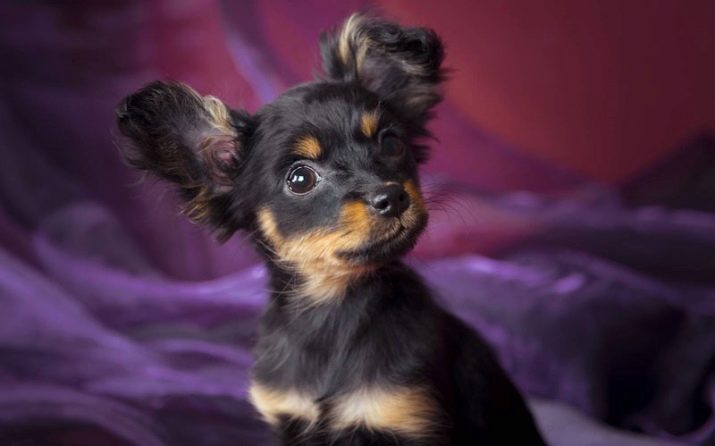
An interesting fact is that long-haired representatives of the breed, which until 1966 generally belonged to the category of experimental breed group, received official recognition and registration much earlier than their smooth-haired “parents”. And already at the end of 1966, Zharova managed to achieve the adoption of a standard for her pets - Moscow long-haired toy terriers. The complete formation of Russian toyas of both types as an independent breed was completed in 1969, and by the end of the year more than 300 dogs with a pedigree were registered.
If you take into account the youth of the breed and the infertility of litters, the figure is very impressive.
In the 60s and 70s of the last century, the cost of puppies of the Russian toy terrier was quite affordable. In this regard, pensioners often became owners of dogs, who took the animal solely for the soul and were absolutely not interested in breeding. Moreover, after the fall of the Iron Curtain, representatives of other miniature breeds poured into Russia, and the Russian toy terrier was almost lost. The breed was already supplanted by newfangled foreign competitors, and the owners of the remaining livestock stopped visiting the exhibitions.
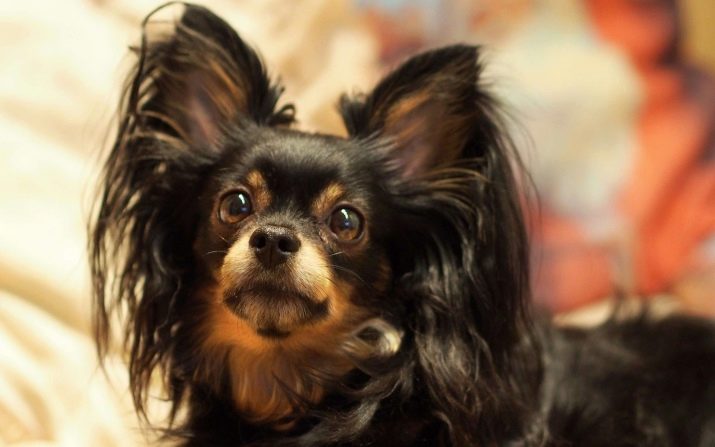
However, in the late 80s, Zharova, along with other enthusiasts, began to revive the Russian toy. It was very difficult to do this, as the previous purebred livestock was old, and their descendants were in other clubs. But step by step, literally from scratch, the breed was still able to be restored, and in 1996 the opening of the Russian Toy Terrier National Breed Club took place in the capital. The following year, the club organized the First All-Russian Breed Exhibition, which aroused great interest among dog breeders and attracted close attention to the breed.
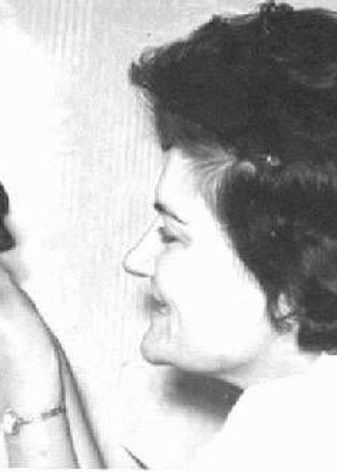
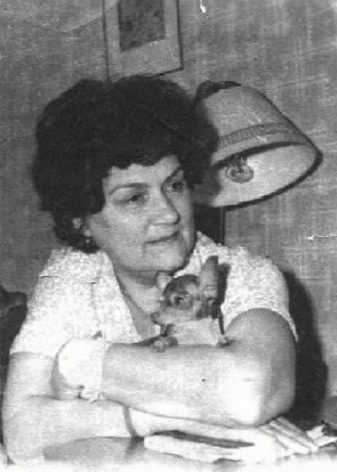
The FCI breed was officially recognized only on 02.21.2006.when a meeting of the Tribal Commission approved the decision to assign it the official standard No. 352. At the request of the Federation, both varieties of the Moscow Longhair and Russian Smooth Toy Terrier were combined into one breed and assigned it the common name Russian Toy Terrier. However, at first the breed had the status of “temporarily recognized” and did not have the right to apply for important international titles. Permanent permission was issued only in 2017, which allowed Russian toy to compete for other world and European championship titles on a par with other breeds.
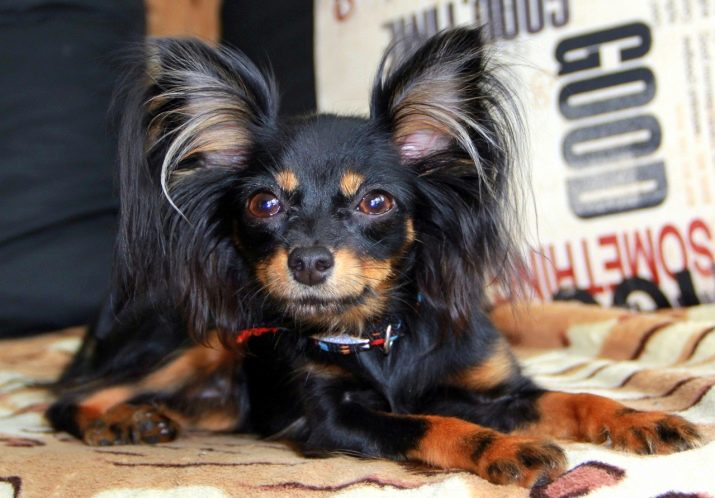
Breed description
The Russian toy terrier, which is often called the toy toy, is a small, elegant and very active dog. Adult individuals are characterized by dry muscles, a thin skeleton and poorly expressed sexual dimorphism, which is clearly noticeable only in the behavior of animals.
- The head of the toy is round in shape, the transition between the muzzle and the convex forehead is well pronounced. Occipital tubercles with superciliary arches weakly visible.
- The muzzle has a pointed shape with thin cheeks and in accordance with the standard is 1/3 of the length of the head. Small and very sharp teeth join in a regular scissor bite, the jaws are light, with thin lips tightly attached to them.
- Big round eyes are set apart from each other and according to the standard is always dark brown.
- The nose is small, pigmented to match the color or black.
- Erect ears have a triangular shape, set high, in relation to the head are quite large.
- The neck is long, gracefully curved, set very high.
- The chest is not very wide, has an oval shape and is somewhat deepened.
- The abdomen is tightened, a pronounced underbelly is absent.
- The back falls noticeably towards the tail and is distinguished by a clearly visible withers.
- The tail is usually docked, however, a natural length is also allowed.
- The legs are straight, thin and long. Paws are arched, oval, fingers tightly closed.
- The movements are free and very confident that, together with the miniature size, it looks very harmonious.
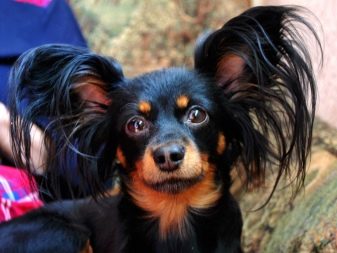
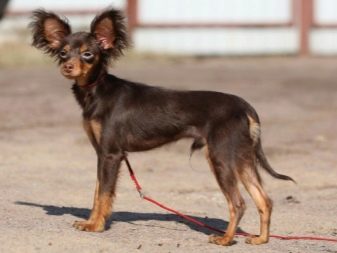
As for wool, then There are two types of Russian toy terriers - smooth-haired and long-haired. In dogs of the first type, the coat is short, adheres tightly to the body and does not have an undercoat. In representatives of the second type, the body is covered with straight or slightly wavy hair 3-5 cm long. Despite the sufficient length of hair, the natural contours of the body are not hidden. On the head and front of the legs, the coat is quite short, although there are scratches on the back of the limbs. The paws are also covered with long hair that completely hides the claws.
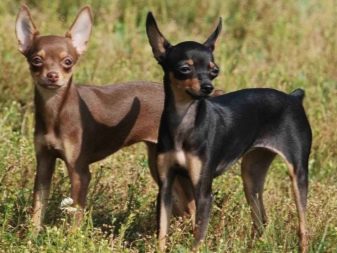

On the ears, the hair also has a sufficient length and hangs fringed down, like a Chinese crested one.
The color of Russian toy terriers is black and tan, blue, purple, red (gold), with a black or brown coating or without it. Disqualification signs include white, black, and black-and-white colors, as well as the presence of white spots, large scorch marks and zoning. In addition to the non-standard color, the toy terrier can be rejected for its rare coat and bald spots in smooth-haired species, for hair that is too long or curly in the long-haired variety, and also if the puppy is lop-eared, short-legged or has an incorrect bite.
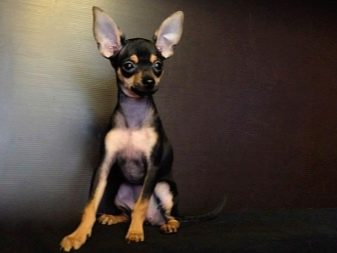
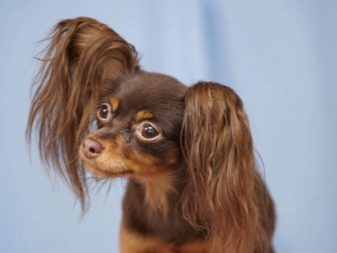
However, the characteristics of the Russian toy terrier will be incomplete if you do not consider the advantages and disadvantages of the breed. So, the advantages of these small and attractive dogs include mobility, energy, good-naturedness, cheerful disposition, unobtrusiveness, obedience and lack of aggressiveness.
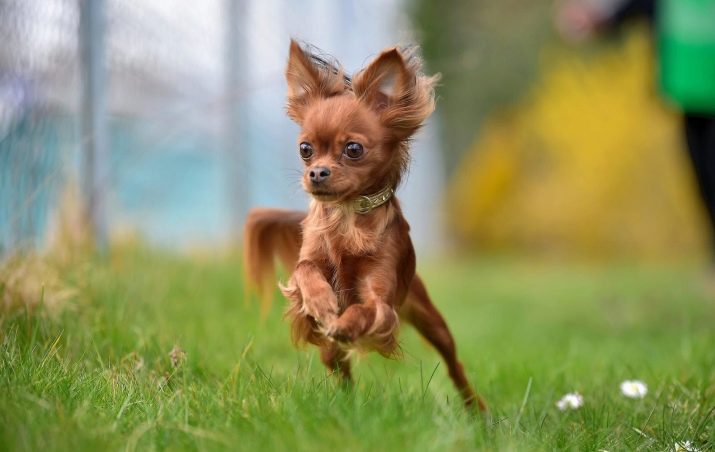
Moreover, they have a balanced character, are very sociable, smart and well trained.
Among the minuses can be noted excessive "talkativeness", which often causes fair indignation of neighbors on the porch, vulnerability to heat and cold, stubbornness, gluttony and cockiness of males. Besides, they are very fragile and require careful handling, especially with regard to their relationship with children. Therefore, if there is a small child in the house, then it is better to look at some other, stronger breed and not endanger the puppy from communicating with the child.
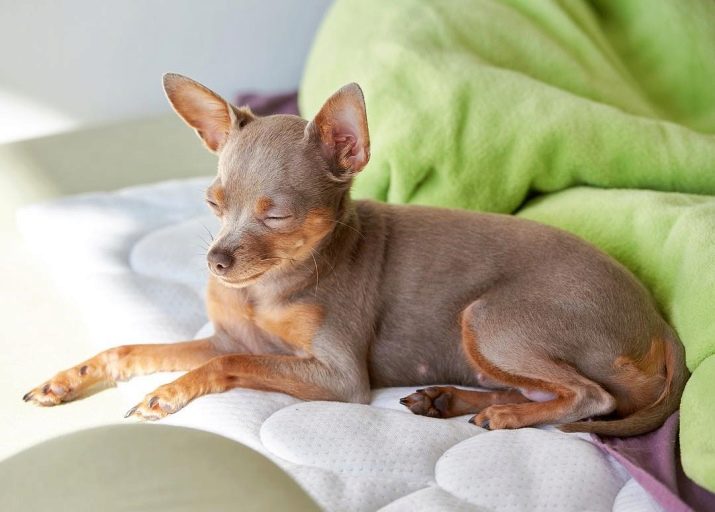
Why is it called dwarf?
The main difference between dwarf dogs from other small breeds is their height and weight. So, males of the Russian toy terrier of both types grow only to 28 cm, and bitches even to 25. The weight of the animals varies from 2 to 3 kg and depends on the gender and age of the pet. If the height of an adult does not exceed 20 cm, and its weight is less than 1 kg 800 g, then such a dog is considered a mini-toy terrier, and "micro-puppies" are often found in litter of parents of standard sizes.
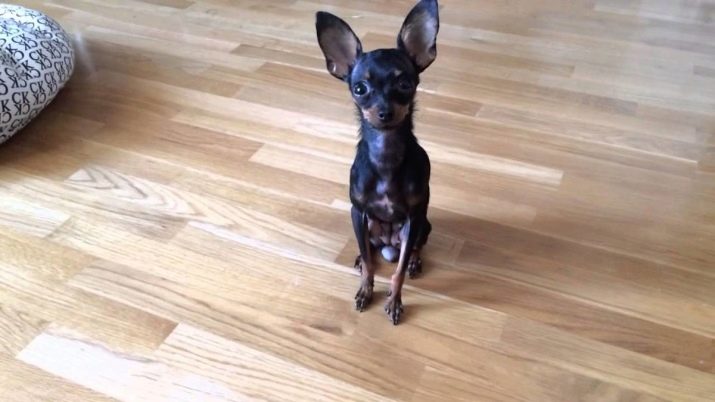
Small pets often act as tame dogs and are a kind of decoration and an indicator of the high social status of their owner. However, according to professional breeders, using not only mini, but dwarf dogs for such purposes is undesirable. This is due to the genetically driven mobility and activity of the toy and their need for constant movement and games.
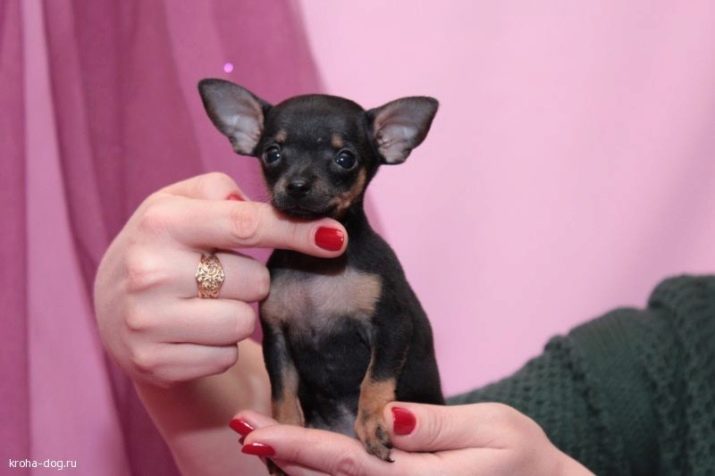
How old are dogs?
Russian toy terriers, including mini toy terriers, are actively growing up to 4-5 months. Upon reaching this age, accelerated growth ceases, and the animal gradually gains muscle mass. It should be noted that during the intense physical development of the puppy, its brain activity also actively develops. As a result, the 4-month-old baby is not inferior to an adult dog in mental development.

However, it should be noted here that these data are quite averaged, since not only genetics, but also the conditions of detention, diet and care affect the puppy's growth. Therefore, these points should be paid close attention and especially monitor the presence of protein foods in the pet's menu. In addition, excessive physical exertion, like sedentary pastime, can harm the formation of bone tissue and lead to diseases of the musculoskeletal system.
The final formation of the skeleton and a set of muscle mass ends by 9-12 months.
Character Features
Russian toy terriers are overly playful and energetic dogs that get along well with other pets and people. but due to the labile psyche and exposure to stress, it is not recommended to take such animals to noisy places. For the same reason, a Russian toy should not be kept in a house where noisy and noisy children live, otherwise the dog will bark a lot and be in a state of constant stress, which will negatively affect her mental health.
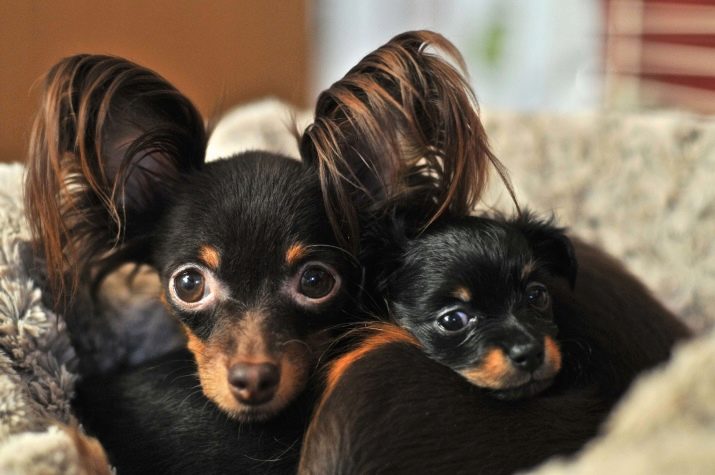
Also, due to the excessive activity of the dogs, the breed should not be taken by older people, as a mischievous pet will require games and will not allow the owners to fully relax.
In addition to activity and playfulness, a distinctive feature of the Toy's character is complete dependence and excessive attachment to his master. There are cases when toy terriers, unable to withstand separation from their owners, fell into severe depression, fell ill and died. It is also impossible not to say about the courage and fearlessness of these little dogs. You can often see situations when a small defender menacingly rushes to the huge dogs. However, such behavior is often completely unreasonable, and the warlike one begins to bully about and without it.
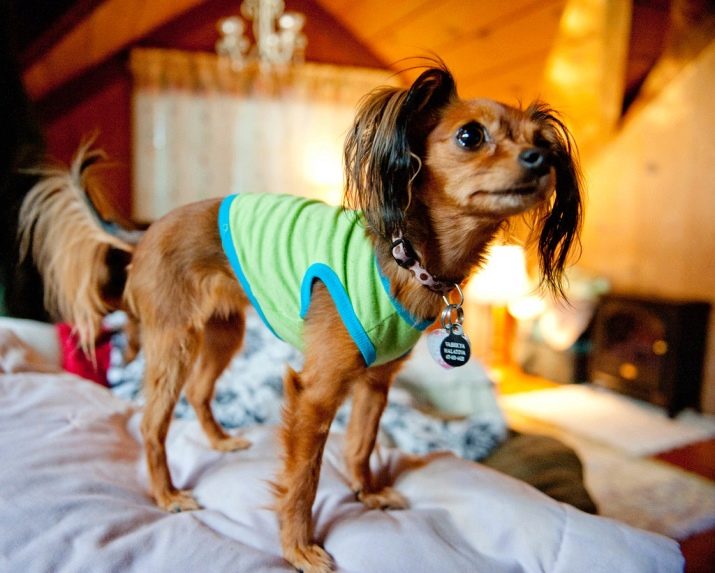
In such cases, owners should devote more time to raising a pet, since aggressive behavior can provoke a reaction of large dogs and lead to serious, and sometimes irreparable, consequences.
As for the attitude towards strangers, the Russian toy behaves with them very wary and looks at the reaction of the owner. If he is calm and benevolent towards a stranger, then the dog will behave with him in exactly the same way. He quickly makes contact with guests who have come to the house, and allows himself to be stroked and picked up. In adolescence, she was not averse to nibbling furniture legs and shoes, which is complicated by its miniature size and ability to penetrate the most inaccessible corners of the apartment. Therefore, in order to avoid material damage, the freedom of movement of the puppy should be limited to one room, from which it would be desirable to remove all unnecessary.
Another characteristic feature of toy is the preservation of activity throughout life. Often you can see a pet of advanced years, tirelessly running after a stick or a ball. In view of the hunting past of direct ancestors - English toy terriers, the dog is not averse to chasing neighboring cats and birds. At such moments, the dog is so carried away by the pursuit that he does not see or hear his master.
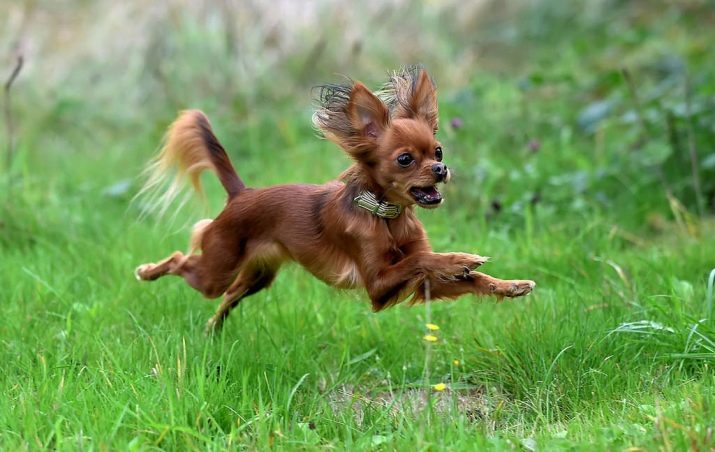
These points must be taken into account and measures must be taken to ensure that the dog does not run too far and is not lost.
It should also be noted the high protective and protective qualities of the toy, however, the miniature size does not allow them to be fully realized. So, at the sight of danger, that breast rises to protect the owner and fearlessly rushes to the offender. From the outside, such a sight looks very funny, however, the dog’s desire to save the owner is so sincere that the offenders sometimes do not withstand his pressure and retire.
How to choose a puppy?
It is better to buy a puppy of the Russian toy terrier in the kennel or from breeders with a good reputation, since buying “on hand” cannot guarantee full compliance of the pet with breed qualities.Such toi often have anomalies in behavior, manifested in excessive cowardice or, conversely, in unjustified aggressiveness. Besides, When buying a toy terrier in a pedigree nursery, you can always get acquainted with the puppy's parents, see the history of their illnesses and observe their behavior. Another advantage of such a purchase will be the availability of a puppy card and a veterinary passport with notes on calendar vaccinations.
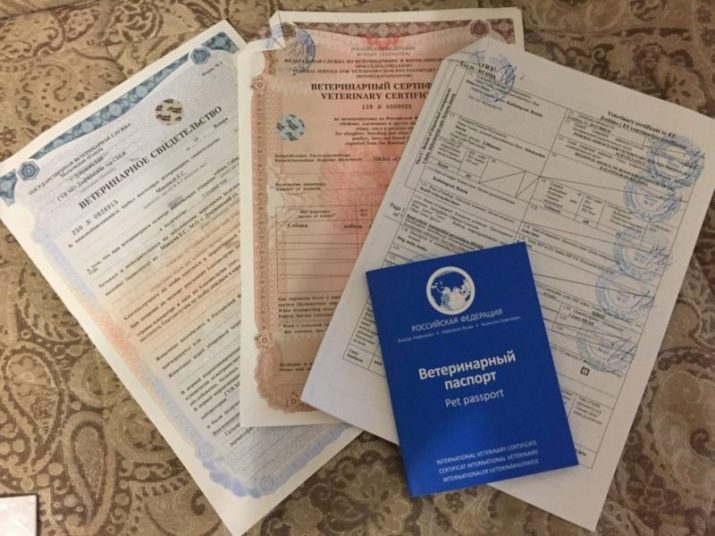
As for the age of the baby, then it is not recommended to purchase puppies who are not yet 2 months old, and the best option is to buy a 3-4-month-old pet. At this age, deviations in the exterior are already clearly visible, so the risks of running into a "fake" are much less. It is also recommended to choose a puppy in a monobreed kennel, as in a multibreed kennel there is a chance of getting culling.
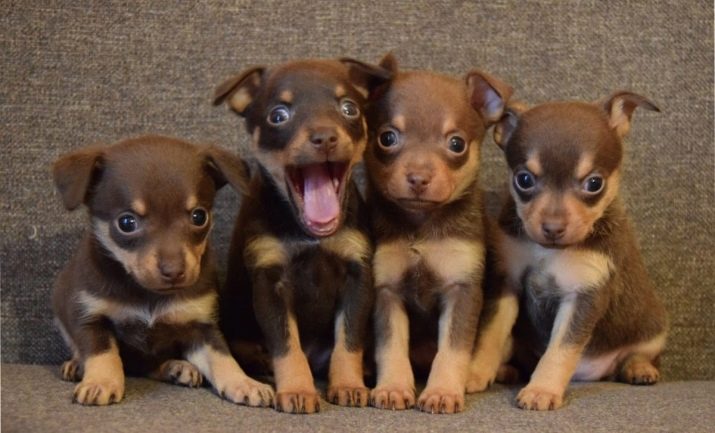
Regarding the cost of toy terriers, one can say the following: the price for a pet class puppy starts at 20,000 rubles, the brid class starts at 30,000 rubles, and the show class starts at 40,000 rubles (2019 data). It should be borne in mind that puppies from unplanned mating that do not have documents are 70-80% cheaper than dogs with documents, and owners of elite genes with medal parents, by contrast, are 20% more expensive than the average cost. The color of a small toy also affects the final cost: chocolate and blue puppies are much more expensive than black babies.
The same with the size: for a mini-toy you will have to give a lot more than for a puppy of a standard size.
Maintenance and care
Russian toy terrier is exclusively a domestic dog and must live in warmth and comfort. When buying a puppy, you need to take care of his berth and pre-acquire him a soft and comfortable couch with low sides. To place the puppy "for the night" should be away from heating appliances and drafts. It is advisable to place the pet in a secluded place where he can rest calmly and at the same time will not prevent family members from walking around the apartment. Small puppies must be provided with toys with which they will spend long hours waiting for a walk. They love their toys very much and even being in old age play with them with pleasure.
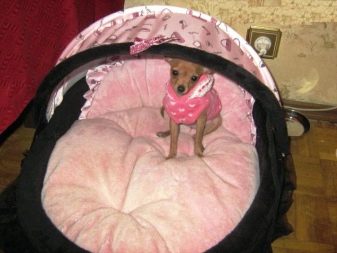

In order that the player does not hang around the household under his feet, he can fence a small area and cover it with artificial grass.
Russian toy needs active walks, so special attention should be paid to physical activity. A mobile lifestyle will help prevent obesity, which most tois are prone to, and will allow the pet to splash out energy accumulated during the day. Dogs really like to run without a leash, however, you can only let them go if you firmly believe in their friendliness. If the dog is constantly bullied on dogs, then it is not recommended to disconnect it from the leash in public places. If you are going for a walk in cool weather, you should put on clothes, since dogs do not tolerate cold and quickly catch a cold.
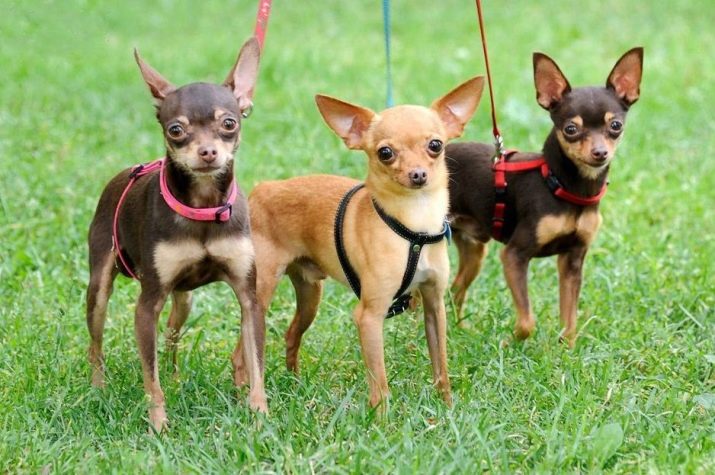
On a walk, you need to make sure that the toy terrier does not drag anything from the ground to his mouth, since many kids have such a habit. In such cases, pet training helps, and in extreme cases - a muzzle. It is very important not to allow that to jump from a height and overcome various obstacles: the dog has very fragile bones and can be injured with any careless movement. As soon as the puppy appears in the house, he should immediately be trained to relieve need on absorbent diapers or in a tray. In the future, this habit will eliminate the need for walks in cold weather and will help maintain order in the apartment.

As for the care of the Russian toy, it is quite simple and includes several mandatory procedures.
- Shorthair toy is combed weekly with a rubber mitten, while long-haired toy is scratched every day.
- Bathing shaggy dogs is recommended every 2 weeks, shorthair - once a month.
- Claws should be cut as they grow, about once every 2 months. It’s not worth hoping that the dog drains them herself: they have very little weight, so even walking on asphalt does not solve the problem.
- Ears should be plugged with cotton while bathing and wiped with an antiseptic solution once a month. In long-haired individuals, it is necessary to monitor the condition of the hair in the ears, and when it grows strongly, gently cut it. In addition, the ears should be examined daily for infection, and even with minor discharge immediately show the animal to the veterinarian.
- The eyes of toy terriers also need daily inspection and removal of dried secretions.
- It is recommended to brush your teeth once a week using dog paste and a miniature brush.
- If the animal does not take part in reproduction, then the castration or sterilization of the pet can be carried out. This procedure is performed at the request of the owner or for medical reasons of 6-12 months for males, and in females - until the first estrus, but not earlier than 5 months of age.
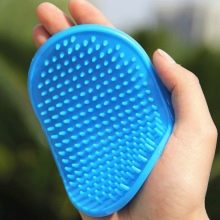
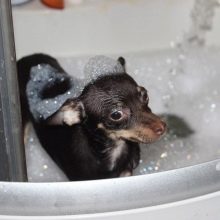

With proper care and optimal conditions of detention, Russian toy terriers practically do not get sick and easily live up to 15 years.
Feeding
You can feed Russian toyas both with natural food and with prepared food. The latter method of feeding is considered the most preferred option, as it does not require a balanced menu and additional use of vitamin-mineral complexes. All components in the feed are selected taking into account their compatibility and in the quantities necessary for the pet.
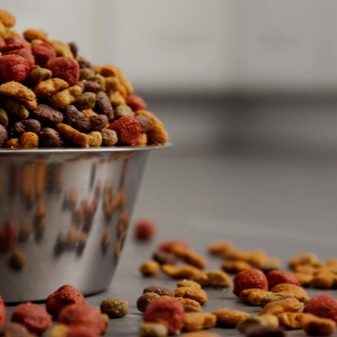

Experts recommend choosing quality premium feed for small dogs of decorative breeds.
If you decide to feed your toy with natural products, then you need to develop a menu taking into account the fact that 40% of the total portion of the portion should be lean meat (beef or chicken) or offal. The remaining 60% should go to cereals (40%) and vegetables (20%). A couple of times a week, you need to offer low-fat kefir, fermented baked milk and cottage cheese, as well as boiled sea fish with selected bones., seasonal fruits and egg yolk. In addition, with a natural method of feeding the animal should additionally be given vitamin and mineral supplements. With any method of feeding, your toy must have free reading of drinking water.
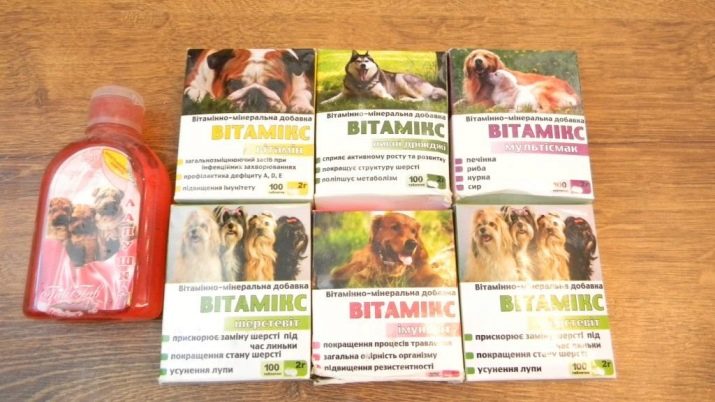
Illegal foods that should never be fed Russian toy include sweets, fatty, spicy and fried foods, as well as pickles and pastries. As for the number of feedings, puppies are fed 5-6 times a day for up to 3 months, they are transferred to 4 times a day for 4 months, 3 times a day for 6 months, and 2 times for a year. In no case should you overfeed Toya, as the breed has a high predisposition to obesity. In this regard, you should not feed the dog off the table and leave food in accessible places for it. So, puppies 1-3 months are given 50-70 g of liquid milk porridge, babies 3-6 months - 100-150 g of still liquid food, and from 6 to 12 months - 250-300 g of solid food. For toi over one year of age, the serving weight should not exceed 500 g.


Parenting and training
Russian toy terrier is a very smart and intelligent dog and lends itself well to training. Pets perfectly understand the meaning of many words, so there are no problems with the execution of commands. Even beginners who do not have such experience can train a small toy. The only condition for raising a dog is regularity and sequence of training. This requirement is due to the fact that inexperienced owners are often confused by the fragile physique and charming appearance of the pet, because of which, instead of starting to raise the dog as early as possible, they begin to spoil the dog unnecessarily.
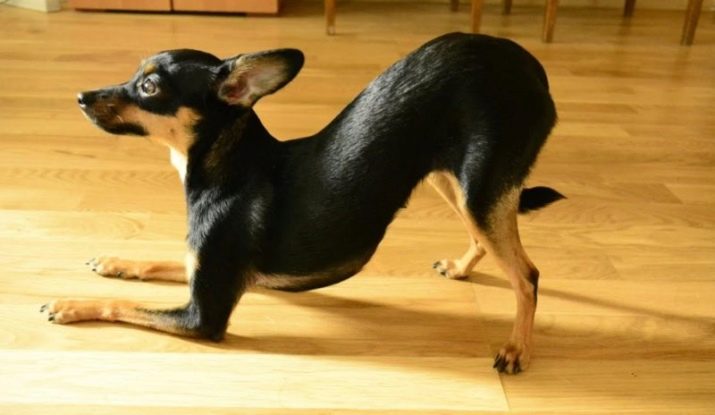
As a result, he quickly feels permissiveness and impunity and literally sits on the neck of his master. The dog begins to literally throw up tantrums and does not calm down until he gets what he wants. Such pets often carry food from the table, bark loudly, demanding delicious treats, show aggression and sleep wherever they want, including in the owner’s bed.
Soon, the owner realizes that he has made a gross omission in education, but it is already too late.
A spoiled and boorish dog is not going to improve at all, and over the years it becomes only more stubborn and willful. Therefore, you should not go on about these cute dogs, and from the first minutes of the appearance of the baby in the house, you must immediately begin to educate him. Russian toy training is carried out according to the classical scheme, using a system of rewards and punishments. As a censure, a strict voice and a shout should be used. In no case should you beat and kick a pet.
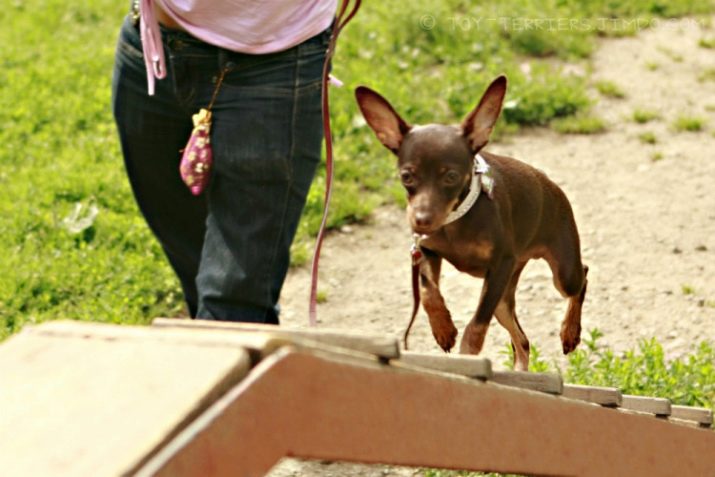
It is not necessary to conduct a general training course with the dog, but the dog should know the basic commands. You need to start training at 3 months, that is, immediately, as soon as the animal gets used to its name and owner. In addition, it is necessary to socialize the toy as soon as possible, especially for overly cocky males.
To do this, you need to walk with the baby more often in crowded places and let him play in company with other puppies.
Owner reviews
The owners respond very positively about their pets and love them dearly. All as one note the good mental abilities of dogs and their high intelligence. Toy terriers often understand their owners literally at first sight and try their best to please and earn praise. However, only exemplary dogs behave this way, whose owners took care of their upbringing on time.
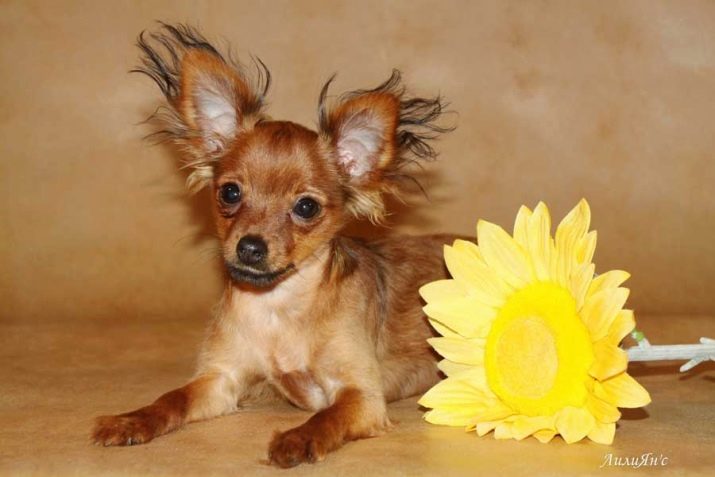
But complaints about the behavior of the toy are also not uncommon. At various "dog" forums often there are reviews of pranks and waywardness of small pets. It is noted that the dogs have a bad habit of coming to bed with the owner and being stubborn when trying to send the dog to their place. Many complain about the loud and often unreasonable barking of small toys, which causes great inconvenience at birth in the child's family. However, there are much more positive reviews about dogs. The owners simply adore their faithful and reliable friends and will not exchange the Russian toy for any other breed.
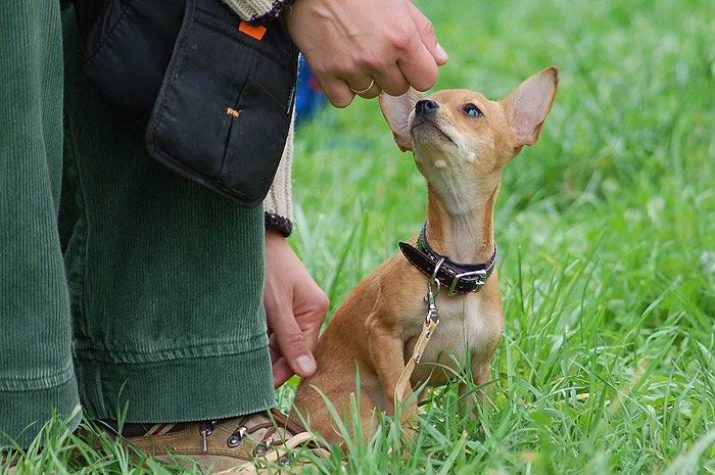
About this breed of dogs, see the next video.








































